 Teacher Feature...
Teacher Feature...
Attitudes Toward Numbers Through History
by Daniel Chang
Introduction
Ever since man has developed numbers, he believes that certain numbers carry mystic power. Hence, this develops the idea of superstitions. Over the ages, people have given special significance to numbers. They believe certain numbers are lucky or possess other powers, while others referred as unlucky besides simply describing a particular quantity. It is not surprise to see some people choose certain numbers for their car number plates, telephone numbers and even the sum number of cash as gifts. Some people also choose particular dates according to the numbers from the calendar to hold special events, such as weddings, birthdays, grand opening of shops, and even burials.
The following describes the attitudes of people from different countries, cultures and religions towards certain numbers through history.
ODD AND EVEN NUMBERS
About three thousand years ago, the Greeks and the Chinese took even numbers, such as 2, 4, 6 and 8 as 'feminine' or 'female' numbers. They called odd numbers, such as 1, 3, 5, 7 and 9, 'masculine' or male numbers. (For the Greeks, the first odd number was 3 but not 1.)
0 (ZERO)
The number 0 stands for nothing. To mathematicians, it is the origin on the number line, a placeholder and the identity element for addition. The number 0 was probably invented in India as sunya in Hindu, which meant 'empty' or 'void'. The Arabs, who borrowed the idea and brought it to Europe, called the numeral sifr, which means 'empty'.
1 (ONE)
Pythagoras looked at number 1 as Unity, and represented Deity, which has no parts. The ancient Greeks thought of 1 as both a triangle and a square. They felt that 1 was the only real number, because all other numbers were made from it. To the Greeks, 1 was so important that they made it their symbol for thinking.
Since number 1 is the first originator of numbers, and even though it is odd, it was considered both male and female. However, 1 was said to be closer to the male principle. When added to a male number, it results in a female number, and vice-versa: 5 + 1 = 6, 6 + 1 = 7.
Ancient Chinese thought that number 1 represented the All, the Perfect, the Absolute beyond all polarity. For the Muslims, one is a mystic numeral for the letter alif, the first letter of the Arabic alphabet, as well as the first letter of the name of Allah.
The colour of 1 is said to be red. And since ancient times, many people have thought of the number 1 belonging to the constellation called Aries, the Ram.

ARIES
2 (TWO)
Two is the first even number -- a number that can be broken apart and made into two smaller numbers that are exactly the same, a 1 and a 1.
According to Pythagoras, number 2 meant Diversity and therefore created disorder, the principle of strife and all evil. The ancient Greeks felt that the number 2 was like someone who could not make up his mind about something. Ancient Romans, took 2 as esteemed unlucky of all numbers because they believed the second day of second month of the year was sacred to Pluto (God of the Underworld).
In the folklore of many lands, the number 2 stands for opposite things, such as good and evil, life and death, wise and foolish or light and darkness.
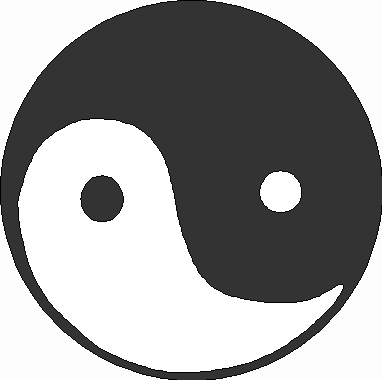 The Chinese religion believes number 2 possess two opposite forces, namely Yin and Yang. Yin is the female principle while Yang, the male. The fundamental polarity on which life rests is also found in the Yin and Yang.
The Chinese religion believes number 2 possess two opposite forces, namely Yin and Yang. Yin is the female principle while Yang, the male. The fundamental polarity on which life rests is also found in the Yin and Yang.
Symbol of Yin and Yang
Number 2 is said to have the colour orange. It belongs to the constellation called Taurus, the Bull.
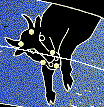
TAURUS
3 (THREE)
The ancient Greeks counted number 3 as the first odd number. It was taken as the first to produce a geometrical figure -- the triangle. The shape is formed when 3 dots are joined together. It has 3 sides and 3 angles or corners.
Pythagoras called 3, the Perfect Harmony, or the union of unity and diversity. For many people in ancient time, number 3 was a magical number. It stood for the three parts of life -- beginning, middle and end. It also stood for the three 'kingdoms' of the earth -- animals, plants and minerals. Number 3 was said to become a demonic number in the sense that wizards and witches usually worked in groups of 3 when casting their spells. In Germany, a number of elements in the folklore and fairy tales appeared in threes, like the 3 wishes, 3 sisters, 3 golden apples, 3 bears and the 3 magical gifts. Number 3 is also the symbol of Trinity to the Christians. It represents the Godhead -- the Father, the Son and the Holy Spirit.
The colour of number 3 is said to be yellow. Ancient people thought 3 belonged to the constellation called Gemini, the Twins.
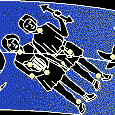
GERMINI
4 (FOUR)
To Pythagoras, number 4 was the number of Perfection and the first square number (2 X 2 = 4). For the Pythagoreans, the sum of the first 4 numbers formed the 'tetraktys' (1 + 2 + 3 + 4 = 10), which became the great unity. Hence, 4 and 10 stand in close relationship to each other.
The Greeks thought of 4 as a shape with 4 sides and 4 corners formed by joining 4 dots. As the number 4 is an even number, it can be separated into 2 equal parts. To the ancient Greeks, justice was a problem that had 2 equal sides, so they used 4 with its 2 equal parts, as a symbol for justice.
People of long ago believed that the world was flat, and they spoke of the "four corners" of the earth. Four is also the number of the main directions (North, South, East and West), and the four seasons (spring, summer, autumn and winter).
Christian exegesis had an ideal symbol for the 4 directions in the form of Christ's cross, with its 4 arms that indicated, for them, the 4 directions in which the Gospel should be preached but was also related to the spatial dimensions of height, length, depth and breadth. Thus, number 4 was the number of the Evangelists.
In China, the people believed to have 4 categories of people, and the scholar was represented with the emblems of 4 arts: the guitar of music, the chessboard for logical games, the book for literature and the picture. However, the similar sound of the words she (4) and shi (death) provided a reason to avoid the number 4. Therefore, some Chinese think 4 is an unlucky number to use.
People from Ireland believe the 4-leaf clover brings good luck, probably because it is very rare. From an old German custom, on Epiphany, girls would plant one bulb each in 4 corners of the house; each bulb was given a man's name, and the one that sprouted first was believed to point to the future husband.
The colour of 4 is said to be green. Number 4 is also said to belong to the constellation called Cancer, the Crab.

CANCER
5 (FIVE)
The ancient Greeks though of 5 as five dots that can be arranged to form a flat shape which has 5 sides and 5 corners or angles. The shape is called pentagon, which means "five corners".
To the Greeks, 5 stood for marriage and love. It was also the first number made of both an odd or masculine number 3, and an even or feminine number 2, that is 3 + 2 = 5. Pythagoras thought that 5 was the prevailing number in Nature and Art. For example, the number of petals is often five, 5 arms of the starfish, 5 fingers and 5 toes. Five is also said to connect with human life and with the 5 senses -- sight, hearing, smell, touch and taste.
The Chinese think that number 5 is represented by the relationship of the 5 elements, namely "earth", "water", "fire", "metal" and "wood". The elements portray as earth swallows water, water extinguishes fire, fire melts metal, metal cuts wood, wood ploughs the earth. Number 5 is treated as an auspicious number by the Chinese and on New Year's Day the doors are decorated with strips of cloth bearing inscriptions such as, "May the fivefold luck enter!"
Christian theologians in early centuries interpreted number 5 as the 5 books of Moses, the Pentateuch, and the 5 wounds of Christ (two in the hands, two in the feet and one in the side). They also thought the number was combined from 3 + 2 that is, faith in the Trinity and the twofold command to love God and one's neighbour.
Another religious tradition in which 5 is very important is Islam. The Muslims believe the 5 Pillars of Faith (profession of faith, ritual prayer, fasting during the month of Ramadan, almsgiving and the pilgrimage to Mecca). Their ritual prayer is performed 5 times a day and the categories in Islamic law are 5, that is, duty, recommended, indifferent, disapproved and prohibited.
The number 5 is said to have the colour blue. It is said to belong to the constellation called Leo, the Lion.

LEO
6 (SIX)
The Greeks described 6 as a "perfect" number. They discovered that number 6 is both the sum and product of its parts. That is, 6 is formed either by adding 1 + 2 + 3 or by multiplying . Moreover, it is the product of the first female number, 2 and the first male number, 1. . Moreover, it is the product of the first female number, 2 and the first male number, 1.
Number 6 was thought to have two shapes by the Greeks. One shape was a triangle, because six dots can be arranged in the shape of a triangle (shown below).
The other shape they thought of has six sides and six corners. Such a shape is called a hexagon, which means "six corners".
Pythagoras thought that 6 was a number of Justice. The Greeks believed that it was the number that stood for life and for good luck. They thought that 6 stood for the number of the parts of the human body -- two arms, two legs, the head and the trunk, or body.
Biblical exegetes believed that God had completed his work of creation in 6 days. Hence, the doctrine of creation in 6 days led to the arrangement of the week with its 6 working days and 1 day of rest.
The colour of 6 is said to be blue as well. And some people think of the number 6 belonging to the constellation called the Virgo, the Virgin.
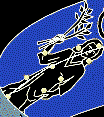
VIRGO
7 (SEVEN)
The number 7 is said to be a mystic or scared number. This number has been accounted by the Pythagoreans as a lucky number since time immemorial. Number 7 is composed of 4 and 3. To Pythagoras, number 7 was the climacteric number in all diseases. Ancient Greeks thought of 7 as a shape with 7 sides and 7 corners. The shape is called a heptagon, which means "seven corners".
The Babylonians, Egyptians and other ancient people believed the number 7 was related to the seven sacred planets. The planets were Mercury, Venus, Mars, Jupiter and Saturn but to these were added the Sun and Moon, making 7 in all. In China, 7 is connected with the female life. It is believed that a girl gets her milk teeth at 7 months and loses them at the age of 7; in 2 X 7 years she reaches puberty and at 7 X 7 = 49 menopause sets in. From a medical viewpoint, one can add that menstruation regularly comes every 7 X 4 days from the first day of the last menstruation. Before modern medicine, it was stated that a baby could survive when born in the seventh month of pregnancy but not in the eighth month.
As 7 seemed like a special and magical number to people of long ago, they related it to many phenomena. For instance, the phases of the moon changes every 7 days, the 7 colours in a rainbow, 7 days in a week, 7 tones in an octave, the seven musical keys and the 7 Greek vowels.
There are a number of important features in the number 7 found in the Bible. In the Old Testament, it speaks of Naaman's 7 times washing in the Jordan to cure his leprosy; the Pharaoh's dream of the 7 fat and 7 lean cows and Jacob's serving first for Leah for 7 years and then another 7 years for Rachel. The New Testament talks about the 7 last words Christ spoke on the cross; the 7 gifts of the Holy Spirit; the 7 seals; the letters sent to the 7 churches and the 7 trumpets blown to usher the terrible Day of Judgement.
Even in legends and folklore, the elements presented in the stories also come in 7, for example, the 7 heads of hydra, 7 dwarfs, the 7-league boots, Sindbad's 7 voyages or 7 riders on white horse. Other belief of 7 also existed in country like Iran, where cats are said to have 7 lives and carry their kittens 7 times to different places. In Japan, the people have a popular belief of the 7 deities that bring good luck. In Bavaria, the yarn spun by girls under the age of 7 was considered precious, and a child at age 7 can see hidden treasure.
The colour of 7 is said to be violet. Some people think that number 7 belongs to the constellation called Libra, the Scale.

LIBRA
8 (EIGHT)
Ancient Greeks thought of 8 as a shape with 8 sides and 8 corners. Such shape is called an octagon, a name that means "eight corners". The ancient Greek mathematicians discovered that every odd number above 1, when squared, results in a multiple of 8 plus 1, thus  . They also found that all squares of odd numbers above 1 differed from each other by a multiple of 8, thus . They also found that all squares of odd numbers above 1 differed from each other by a multiple of 8, thus  , or , or  . To the Greeks, the number 8 was the symbol for wisdom. . To the Greeks, the number 8 was the symbol for wisdom.
The Muslims believe that there were 8 paradises and this idea is suggested by the title Hasht bihisht, " 8 Paradises", found several times in many Persian literature. The Christians related 8 as the 8 beatitudes mentioned by Christ in the Sermon on a mountainside.
Number 8 is an auspicious and lucky number to the Chinese. In ancient China, one often finds 8 attributes of an art, science or religion, such as the 8 symbols of Buddhism, 8 emblems of a scholar or of Confucianism, 8 types of Chinese musical instruments and the 8 symbols of the " Eight Immortals" in Taoism beliefs. The "Eight Immortals" or Bah Sin are the legendary figures which each represents a different condition in life: masculinity, femininity, age, youth, poverty, wealth, mobility and commonness. In Chinese, the words Bah (8) and Fah (Prosperity) have the similar sound. That is why some Chinese prefer 8 to be used as car number plates, telephone numbers, house numbers, prices of products and even bank account numbers!
It was no wonder a remarkable number of couples of different countries (like, China, Taiwan, Singapore, Germany) who got married on that auspicious day dated 8. 8. 88!
The colour of 8 is said to be rose. Some people think that 8 belongs to the constellation called Scorpio, the Scorpion.

SCORPIO

Number 9 consists of a trinity of trinities. According to Pythagoras, man is a full chord, or 8 notes and deity comes next. Three, being Trinity, represents a perfect unity. Twice 3 is a perfect dual  , and 3 times 3 is a perfect plural , and 3 times 3 is a perfect plural  . This explains why 9 is a mystical number. . This explains why 9 is a mystical number.
The ancient Greeks thought 9 as a shape with 9 sides and 9 corners. The shape is called the nonagon, which means "nine corners". They also thought of 9 as 9 dots arranged in the shape of a square (shown below).
The number nine is also related to a Chinese legend in which Emperor Yu saw the first magic square which was engraved on the back of a divine tortoise. On its back there was a figure with number signs, which transcribed into modern numerals looked like this.
From the square, it shows that the numbers are divided in 9 parts surrounding the central 5, and thus the whole world was considered to consist of groups of 9. This means the sky has 9 areas; the earth, 9 countries; each country, 9 mountain ranges; each mountain range, 9 passes, and the ocean has 9 islands.
The sound for the Chinese words Cheś (9) and Chił (long time or long lasting) are similar. Hence, the number 9 is also considered as a lucky number. The Chinese believe the symbol 9 means 'longetivity' and that is why during wedding the groom has to present a sum of money
($ 9 999 999.99) to the bride's household before he could meet the bride. It is hope that the bride who is married to the groom would have a good, happy and long married life.
The number 9 also appears frequently in tales and myths from countries like, Germany, Greece, England, Finland and India. For example, 9 kinds of elves, 9 muses, 9 evil brothers or sisters, 9 lives of a cat, ninefold strength of a hero, 9 cowgirls who played a trick on Krishna, and the Pied Piper of Hamelin who charmed the children with the ninth tune of his flute. Also, in Shakespeare's Macbeth where the "weird sisters" chanted "Thrice to thine, and thrice to mine, and thrice again, to make nine. Peace! The charm's wound up."
All colours are said to belong to the number 9. People think that 9 belongs to the constellation called Sagittarius, the Archer.
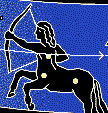
SAGITTARIUS
10 (TEN)
The ancient Greeks gave 10 a shape with 10 sides and 10 corners called a decagon, which means "ten corners". They also thought of 10 as a triangle made out of the sum of the first four natural numbers (1 + 2 + 3 + 4 = 10). This could be shown with 10 dots to form an equilateral triangle as shown.
For many ancient people, 10 represented a sort of new beginning. The ancient Babylonians held a ten-day celebration in honour of springtime, which is the beginning for all growing things. The number 10 is associated with a number of things in the Bible. For instance, the 10 Commandments given to Moses; the 10 generations between Adam and Noah; the 10 plagues in Egypt; and the words "And God spoke" appeared in Genesis 1 not less than 10 times, which talked about the creation.
In our system of counting, it is said the number 10 is a stopping place. This is because long ago, people did all their counting on their fingers. They had 10 fingers and so they counted things by tens. They would count up to 10 fingers and then start over.
People think the number 10 belongs to the constellation called Capricorn, the Goat.

CAPRICORN
13 (THIRTEEN)
The number 13 is an unlucky number to a lot of people, especially the westerners. Some people even have the fear of 13, called "Triskaidekaphobia". There are people refuse to travel on the thirteenth of the month. It is viewed with even greater apprehensive, if the thirteenth day of a month happens to fall on a Friday (Friday the 13th). It is also traditionally thought to be unlucky for a ship to begin a voyage on that day. The 13th of any month is widely regarded as inauspicious day on which to undertake any new enterprise.
Many people will not live in a house or apartment building, which has a number 13 or a 13th floor. In fact, many tall buildings and some hotels in the West avoid the number13 for rooms or even skip the thirteenth floor.
The ancient Romans also regarded number 13 as unlucky. They thought it as a sign of death and destruction. In the Middle Ages, it was believed that in witch covens, there were always 13 members.
Some people think that the idea of having 13 people at a table to dine brings bad luck. This idea is related with the last Supper of Jesus Christ. It is said that Christ dined with his 12 followers, which meant that 13 people sat at the table. After supper 1 of the 12 men betrayed Christ to his enemies. Christ was arrested and he was crucified the next day, a Friday. Another idea of origin that sitting down 13 at a table is unlucky came from an ancient Norwegian myth. It is said that the Norse gods were having a great feast one day and there were exactly 12 gods and goddesses invited to dine. But a god named Loki invited himself to the party. During the feast, Loki caused some mischief which accidentally resulted in the death of Baldur, one of the guests. Loki, the Norse god of evil, was the uninvited 13th guest!
Conclusion
It is interesting to know that our number system has very few number symbols, namely, 1, 2, 3, 4, 5, 6, 7, 8, and 9 together with 0. Hence, the system offers an economical use of the symbols and the ease of computation.
Although different civilization had its own signs for number, the people had their own interpretation of the numbers. Then again, people from different countries, cultural backgrounds, religions and races also came up with their own ideas, beliefs and myths about the number symbols. Their attitudes towards certain numbers are said to have passed from one generation to the next. In other words, the important uses of numbers would not change through the evolution of time.
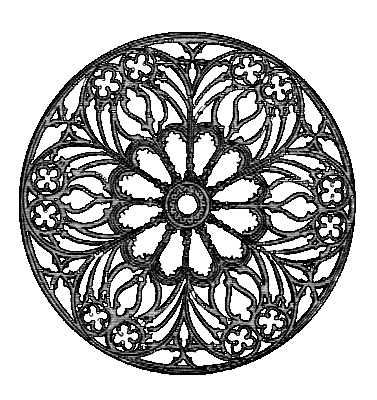 On the other hand, numbers with 2 or 3 digits, such as 12, 16, 21,120, 216 were also treated as sacred and significant to certain civilization. Apparently, this is all depend on the individual whether he or she believes the numbers could really provide good fortune or curses in his or her daily life.
On the other hand, numbers with 2 or 3 digits, such as 12, 16, 21,120, 216 were also treated as sacred and significant to certain civilization. Apparently, this is all depend on the individual whether he or she believes the numbers could really provide good fortune or curses in his or her daily life.
References
Brewer, Ebenezer Cobham. Room, Adrian (1995). Brewer's Dictionary of Phrase & Fables. Fifteenth Edition. Cassell Publishers Ltd.
(1986) Childcraft---The How and Why Library. Mathemagic. Vol. 13. World Book, Inc.
Gawar, Norman (1979). An Invitation to Mathematics. Oxford University Press.
Katz, Victor J. (1993). A History of Mathematics. An Introduction. Haper Collins College Publishers.
Pappas, Theoni (1991). More Joy of Mathematics: Exploring Mathematics All Around You.
Wide World Publishing / Tera.
Schimmel, Annemarie (1993). The Mystery of Numbers. Oxford University Press.
Browse the Math Teachers ChatBoard at
http://teachers.net/mentors/math
| 
